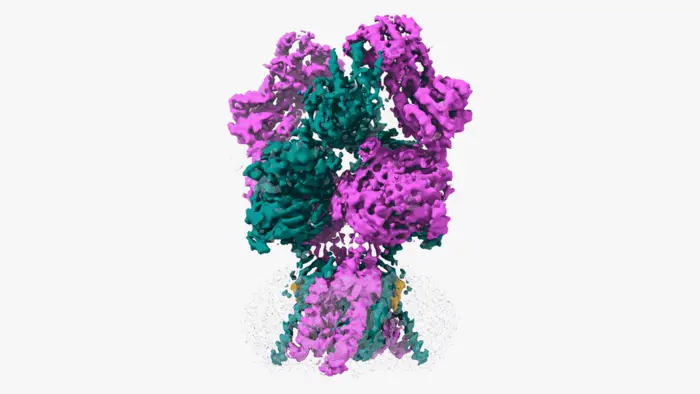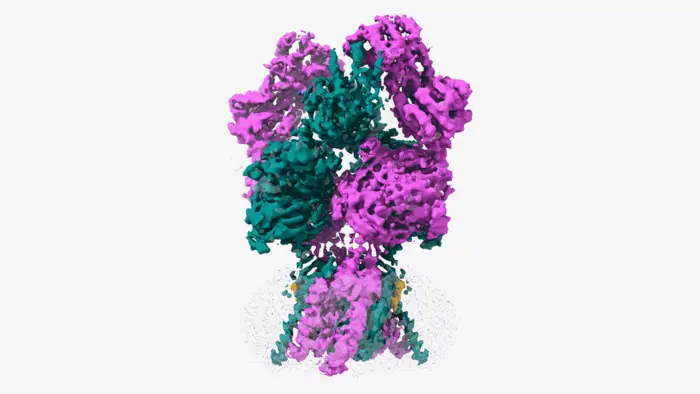Proteins are constantly performing a kind of dance. They move and contort their bodies to fulfill specific functions inside our bodies. The NMDAR protein executes an especially hard dance routine in our brains. One wrong step can lead to a range of neurological disorders. NMDAR binds to the neurotransmitter, glutamate, and another compound, glycine. These bindings control NMDAR’s dance steps. When their routine is over, the NMDAR opens. This open ion channel generates electrical signals critical for cognitive functions like memory.

Credit: Furukawa lab/Cold Spring Harbor Laboratory
Proteins are constantly performing a kind of dance. They move and contort their bodies to fulfill specific functions inside our bodies. The NMDAR protein executes an especially hard dance routine in our brains. One wrong step can lead to a range of neurological disorders. NMDAR binds to the neurotransmitter, glutamate, and another compound, glycine. These bindings control NMDAR’s dance steps. When their routine is over, the NMDAR opens. This open ion channel generates electrical signals critical for cognitive functions like memory.
The problem is that scientists couldn’t figure out the last step in NMDAR’s routine—until now. Cold Spring Harbor Laboratory Professor Hiro Furukawa and his team have deciphered the critical dance move in which NMDAR rotates into an open formation. In other words, they’ve learned the NMDAR “Twist.”
To capture this key step, Furukawa and his team used a technique called electron cryo-microscopy (cryo-EM), which freezes and visualizes proteins in action. First, the team had to find a way to keep a type of NMDAR called GluN1-2B in its open pose long enough to image it. So, Furukawa teamed up with Professors Stephen Traynelis and Dennis Liotta at Emory University. Together, they discovered a molecule that favors NMDAR in an open position.
“It’s not the most stable conformation,” Furukawa explains. “There are many pieces dancing independently in NMDAR. They have to coordinate with each other. Everything has to go perfectly to open the ion channel. We need a precise amount of electrical signals at the right time for proper behaviors and cognitions.”
The cryo-EM images allow researchers to see precisely how the NMDAR’s atoms move during its “Twist.” This may one day lead to drug compounds that can teach the correct moves to NMDARs that have lost a step. Better drugs that target NMDARs might have applications for neurological disorders like Alzheimer’s and depression.
“Compounds bind to pockets within proteins and are imperfect, initially. This will allow us and chemists to find a way to fill those pockets more perfectly. That would improve the potency of the drug. Also, the shape of the pocket is unique. But there could be something similarly shaped in other proteins. That would cause side effects. So, specificity is key,” Furukawa explains.
Indeed, there are many types of NMDARs in the brain. Another recent study from Furukawa’s lab offers the first view of the GluN1-3A NMDAR. Surprisingly, its dance moves are completely different. This routine results in unusual patterns of electrical signals.
In other words, we’re mastering the Twist. Next up: the headspin.
Journal
Nature
DOI
10.1038/s41586-024-07742-0
Article Publication Date
31-Jul-2024





